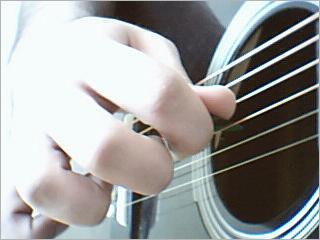 |
| Jimi Hendrix (Photo credit: Wikipedia) |
The blues guitarist Robert Johnson features on many lists. He has the added attraction of a shadowy legend all his own. The story goes that he was a pretty average, even bad guitarist, but in just one year he became phenomenal... Where had this new talent come from? Nobody wanted to believe it was just practice and hard work, so the tale started that Johnson had made a pact with the Devil.
The deal had been done, so the story goes, at a crossroads somewhere in the Deep South. Johnson himself immortalized the meetings, probably ironically, in songs like Crossroad Blues and Me And The Devil Blues. These were some of the few tracks he was able to record before his death in 1938 at the tender age of 27. To this day no one knows if he was stabbed or poisoned or if the devil himself came to claim what he was owed.
Tragically young death isn't essential to become a guitar great, but another man who makes most lists also died aged only 28. Jimi Hendrix took guitar playing to an entirely new level of showmanship. But sometimes people remember the antics - playing solos behind his back or with his teeth, setting his guitar on fire (an idea which owes a lot to Jerry Lee Lewis) - and forget how fantastic he was as a musician.
Hendrix was an all-round musician, equally adept at blues, rock, and jazz. Believe it or not, he only had a bassist and drummer in his live concerts. He was a great exponent of playing guitar and very innovative as well. Being left-handed, he restrung his guitar upside down.
All legends have lots of controversies associated with them and Hendrix was no exception. He has been blamed for covering other band's songs in concert and on record. Once he did the Beatles 'Sergeant Pepper's Lonely Heart's Club It is believed that he could play a song after listening to it for just once. He is also a credit to have pleased the stubborn Miles Davis with his music.
Guitar players rule the roost in many forms of music. People do not view them only as rock or bluesman. That is why Django Rheinhardt, John Williams, and Paco de Lucia are considered universally great. No doubt complete agreement on guitar legends cannot be achieved.




